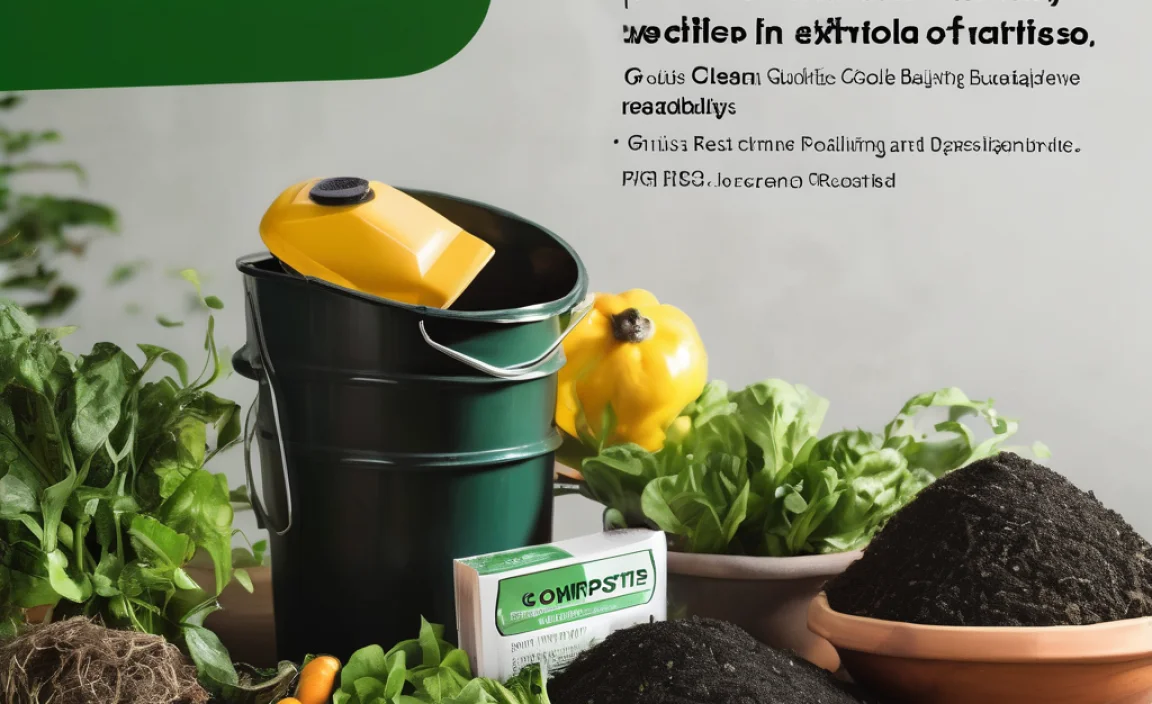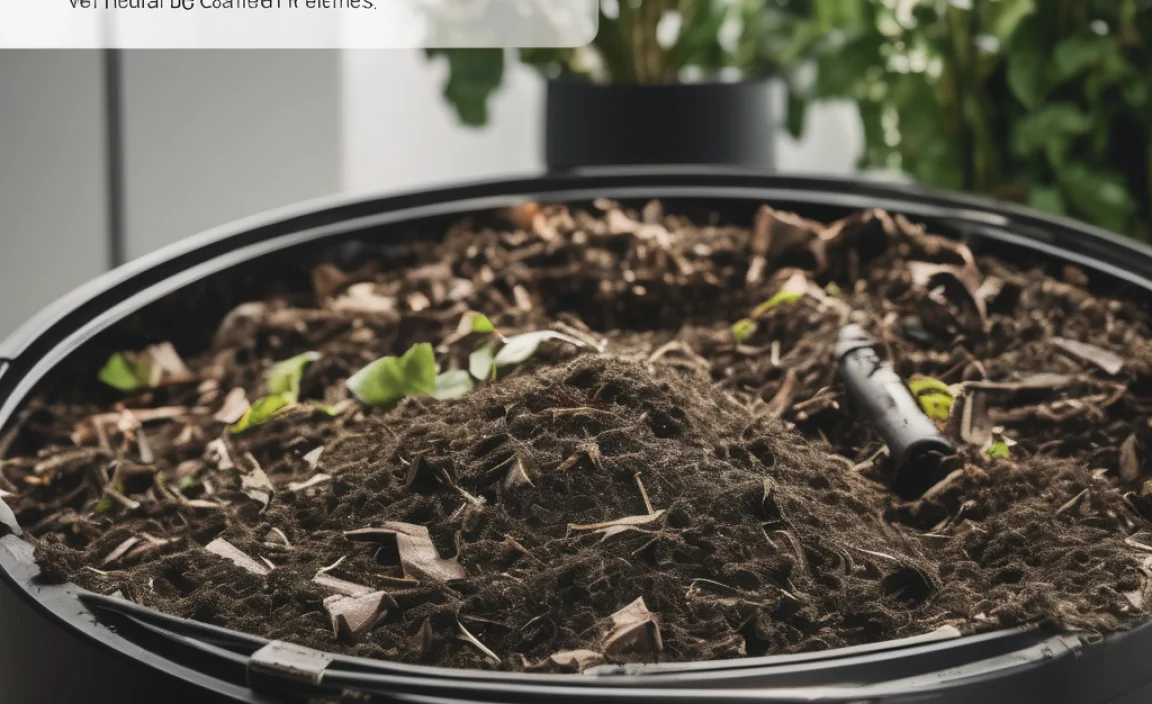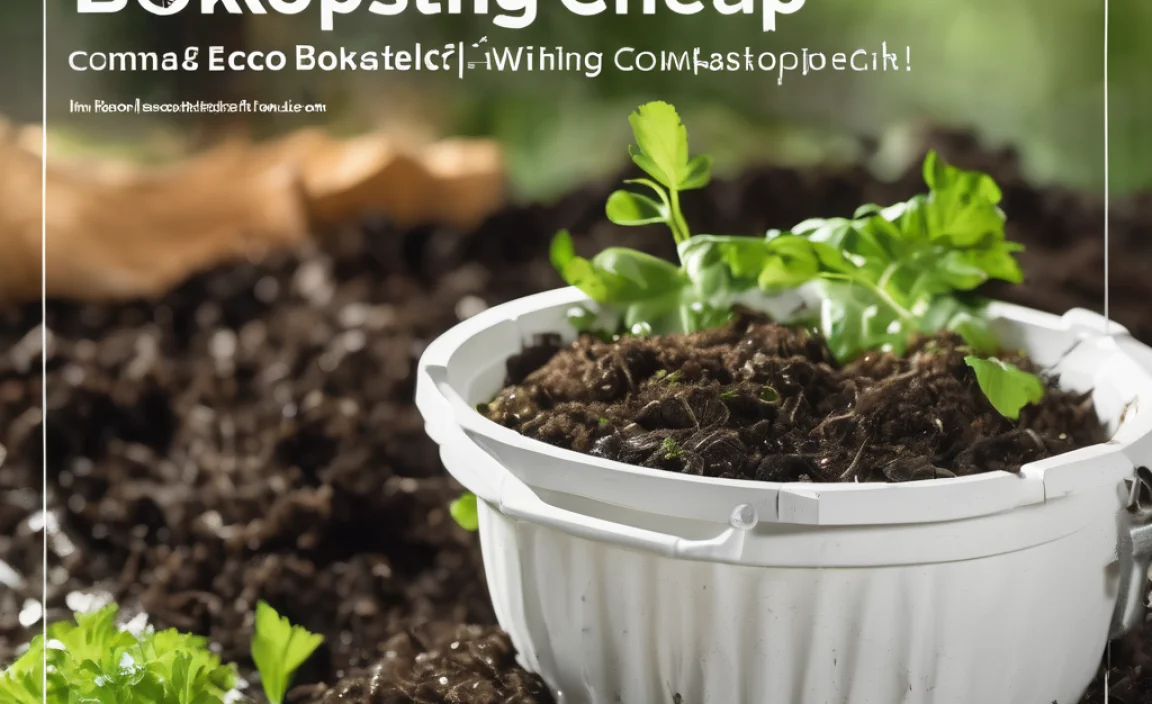Have you ever heard of a simple way to recycle food scraps? Sheet composting might be what you’re looking for! It’s an affordable method to enrich your garden soil. Imagine turning kitchen waste into plant food right in your backyard. Sounds amazing, right? Let’s dive into the world of sheet composting and discover how it works.
Key Takeaways
- Sheet composting enriches soil by using layers of waste.
- This method is easy and requires little effort.
- Using sheet composting is affordable and saves money on fertilizers.
- It helps reduce kitchen waste and benefits the environment.
- Good for both small gardens and large plots.
Sheet Composting Is Affordable and Easy
Sheet composting is a way to compost right on the ground. You don’t need a bin or pile. Just spread organic material, like leaves or food scraps, directly on the soil. Cover it with another layer, like straw or grass clippings. The layers break down and enrich the soil. It’s very affordable since you use materials you already have. Not only does this save money, but it also helps reduce waste.
- Use kitchen scraps like fruit peels.
- Add grass clippings for extra nitrogen.
- Use leaves to create a cover layer.
- Water the layers to speed up composting.
- Covers help retain moisture in the soil.
- Use cardboard to start the process.
Sheet composting is affordable because it doesn’t require special equipment. You can start with what you already have at home. This method reduces the need for store-bought fertilizers. It’s a simple, natural way to improve your garden soil. You’ll see healthier plants and bigger harvests.
Fun Fact or Stats : Did you know that about 30% of household waste can be composted?
Why Choose Sheet Composting?
Why should you choose sheet composting? It’s simple! Picture this: you finish peeling a banana, and instead of throwing the peel away, you use it to feed your garden. Sheet composting turns waste into plant food quickly. Plus, it’s free! Most of us throw away things we could compost. Imagine if everyone started sheet composting. The amount of waste in landfills would greatly decrease. Can you believe that? What a great way to help the planet and your garden!
Using Kitchen Scraps Wisely
Do you ever wonder what to do with your apple cores or potato peels? Instead of tossing them in the trash, consider using them for sheet composting. Kitchen scraps are full of nutrients. When added to your garden, they break down and feed the soil. It’s like giving your plants a healthy meal! Isn’t that a smart way to recycle? Sheet composting is affordable, and it uses things you already have. So next time you cook, think about how you can use those scraps to help your garden grow.
Layering Techniques
Have you ever seen a layered cake? Sheet composting uses layers too, but instead of frosting, we use organic waste. Layering is important for composting. It helps balance the materials. Start with a base layer, like cardboard, to block weeds. Then add a layer of kitchen scraps. Next, add leaves or grass clippings. Water each layer to help it break down. This simple method is effective and affordable. How cool is it to turn waste into something useful?
Benefits of Sheet Composting in Your Garden
Sheet composting offers many benefits for your garden. First, it improves soil health. The layers break down over time, adding nutrients to the soil. These nutrients help plants grow strong and healthy. Second, it saves money. By using waste materials, you spend less on fertilizers. Third, it reduces waste. Instead of sending scraps to the landfill, you recycle them in your garden. This is good for the environment.
- Enriches soil with natural nutrients.
- Reduces the need for chemical fertilizers.
- Recycles food scraps and yard waste.
- Improves soil structure and water retention.
- Minimizes garden waste sent to landfills.
- Encourages earthworms, which aerate the soil.
Sheet composting also attracts earthworms. These worms help aerate the soil, allowing roots to grow better. It’s a win-win for you and your garden. Think of it as nature’s own recycling program. By choosing sheet composting, you’re doing something great for the planet and your plants.
Fun Fact or Stats : Earthworms can consume their own weight in soil every day!
Healthy Soil Equals Healthy Plants
Ever wonder why some plants grow better than others? Healthy soil is the key. When you use sheet composting, you improve your soil’s health. The organic material breaks down and adds nutrients. These nutrients feed your plants, helping them grow strong. Think of it like giving them vitamins. The healthier your soil, the healthier your plants. It’s amazing how something as simple as composting can make such a big difference. Why not give your garden the best chance to thrive?
Saving Money on Fertilizers
Did you know that fertilizers can be expensive? That’s why sheet composting is a great alternative. By using waste materials from your kitchen and garden, you create your own fertilizer. It’s like having a free supply! This saves you money and reduces the need for chemical fertilizers. Plus, it’s better for the environment. Isn’t it amazing that something so simple can be so effective? Start sheet composting today and see the savings add up!
Reducing Waste with Composting
Have you seen how much trash we throw away each day? A lot of it could be composted instead. Sheet composting helps reduce waste. Instead of sending food scraps to the landfill, you can recycle them in your garden. This means less trash and more nutrients for your plants. Imagine if everyone composted. We could greatly reduce the amount of waste in our world. It’s a simple step toward a cleaner planet. Are you ready to make a difference?
How to Start Sheet Composting
Starting sheet composting is easy. First, choose a spot in your garden. Make sure it’s an area where you want to improve the soil. Next, gather your materials. You’ll need kitchen scraps, leaves, grass clippings, and cardboard or newspaper. Start by laying down the cardboard as a base. This helps block weeds. Then, add a layer of kitchen scraps. Cover with leaves or grass clippings. Water the layers to help them break down.
- Pick a spot in your garden.
- Lay down cardboard or newspaper.
- Add a layer of kitchen scraps.
- Cover with leaves or grass clippings.
- Water the layers well.
- Repeat layers as needed.
After layering, let nature do its work. The layers will break down over time, enriching the soil. You don’t need to turn it or manage it much. Just add more layers as needed. In a few months, you’ll have nutrient-rich soil ready for planting. It’s a great way to recycle and improve your garden. Plus, it’s so easy that anyone can do it!
Fun Fact or Stats : Composting can reduce household waste by about 30%!
Gathering Materials
What do you need to start sheet composting? The good news is you probably already have what you need! Gather kitchen scraps like fruit peels and vegetable ends. You’ll also need yard waste like leaves and grass clippings. Cardboard or newspaper is useful for the base layer. These materials are usually thrown away, but now you can put them to good use. It’s an easy way to recycle while helping your garden grow. Isn’t it great that you can start composting with what you already have?
Layering the Compost
How do you create the layers in sheet composting? Start with the base layer of cardboard. This helps keep weeds away. Then, add a layer of kitchen scraps. Cover with leaves or grass clippings. Water each layer to help it break down. Repeat these layers until you reach the desired height. This layering process is what makes sheet composting effective. The different materials break down at different rates, enriching the soil over time. It’s like building a delicious lasagna for your garden!
Monitoring and Maintenance
Do you have to watch your compost all the time? Not at all! Sheet composting is one of the easiest methods out there. Once you’ve set up your layers, there’s little to do. Just check occasionally to see if it needs more water. Add more layers as you get more kitchen scraps. In time, the compost will break down and improve your soil. It’s a low-maintenance way to garden and recycle. Isn’t it amazing how nature can do the hard work for us?
Comparison of Sheet Composting vs. Traditional Composting
Wondering how sheet composting stacks up against traditional composting? Both methods are great for recycling organic waste, but they work a bit differently. Traditional composting usually involves a bin or a pile that you turn regularly. It requires more effort and space. Sheet composting, on the other hand, is done directly on the ground. It’s less work and doesn’t need a bin. Let’s look at a table comparing both methods to see which might suit you best.
| Feature | Sheet Composting | Traditional Composting |
|---|---|---|
| Ease of Use | Simple, anyone can do it | Requires turning and managing |
| Space Needed | Limited space required | Needs dedicated area |
| Cost | Low, uses household waste | May require a bin or tools |
| Time to Compost | Longer, depends on conditions | Can be faster with regular turning |
- Sheet composting is easier for beginners.
- No special tools needed for sheet composting.
- Traditional composting may be faster with more effort.
- Sheet composting is better for small spaces.
- Both methods recycle organic waste effectively.
Both methods have their pros and cons. Sheet composting is affordable and requires less effort. Traditional composting might be faster if you have the space and time. The choice depends on your needs and resources. Either way, composting is a great choice for a greener planet!
Fun Fact or Stats : Composting can reduce carbon emissions from waste by up to 50%!
When to Use Each Method
When should you choose sheet composting over traditional methods? If you have limited space or want something simple, sheet composting is the way to go. It’s perfect for small gardens or even a flower bed. Traditional composting is better if you have more space and time to manage a compost pile. Both methods help recycle waste and improve soil. It’s about finding what works best for you. Whether you choose sheet or traditional composting, you’re helping the environment!
Pros and Cons of Each Method
What are the pros and cons of sheet and traditional composting? Sheet composting is easy and requires less work. It’s perfect for beginners or those with limited space. The downside is it takes longer to see results. Traditional composting can be faster with regular turning but requires more effort and space. It might also need a compost bin. Both methods recycle waste into garden gold. It’s all about choosing the right method for your needs and lifestyle.
Which Method Is Right for You?
How do you decide which composting method to use? Think about your space and how much effort you can put in. If you want low-maintenance and have limited space, go for sheet composting. If you can manage a compost pile and want quicker results, traditional composting might suit you better. Remember, both methods are great for the environment. Wherever you start, you’ll be making a positive impact. Isn’t it great to have options that are both helpful and eco-friendly?
Conclusion
Sheet composting is an easy and affordable way to recycle waste. It turns everyday scraps into nutrient-rich soil. This method saves money and reduces waste, making it great for the planet. With sheet composting, anyone can improve their garden. It’s simple, effective, and earth-friendly. Why not start today and see the difference it makes?
FAQs
Question: How does sheet composting work?
Answer: Sheet composting involves spreading layers of organic waste directly on the ground. Cover with leaves or grass. Water the layers to help them break down. It enriches the soil over time.
Question: What materials can I use in sheet composting?
Answer: Use kitchen scraps like fruit peels and vegetable ends. Add yard waste like leaves and grass clippings. Cardboard or newspaper works as a base layer. These items break down and feed the soil.
Question: Is sheet composting affordable?
Answer: Yes, sheet composting is affordable. It uses waste materials you already have at home. This method saves money on fertilizers and reduces the need for extra tools or bins.
Question: Can I use sheet composting in a small garden?
Answer: Absolutely! Sheet composting is perfect for small gardens. It requires little space and can be done directly on the ground. It’s a simple way to improve your soil without much hassle.
Question: How long does sheet composting take?
Answer: Sheet composting can take several months to a year, depending on conditions. The layers break down slowly, enriching the soil over time. Patience is key, but the results are worth it!
Question: Why is sheet composting good for the environment?
Answer: Sheet composting reduces waste sent to landfills. It recycles organic materials into nutrient-rich soil. This process decreases greenhouse gases and supports a healthier planet.




